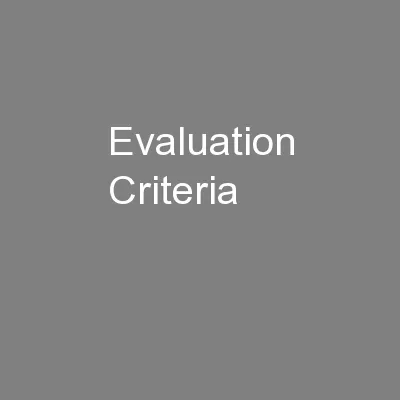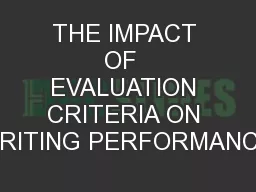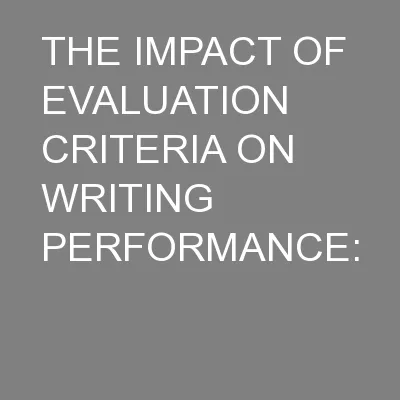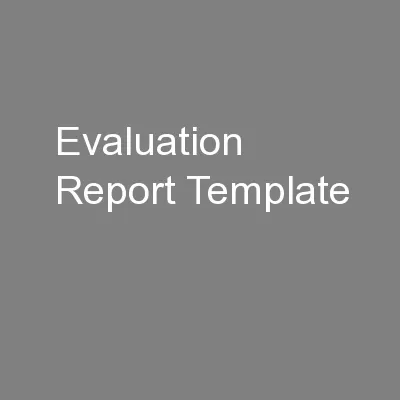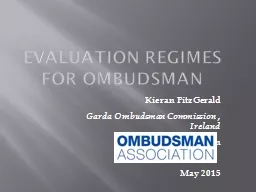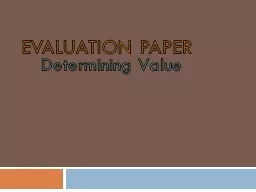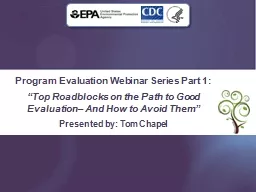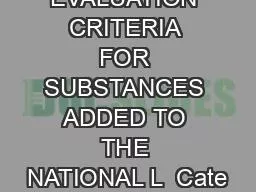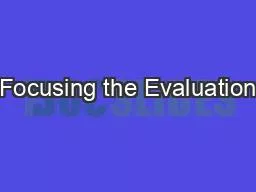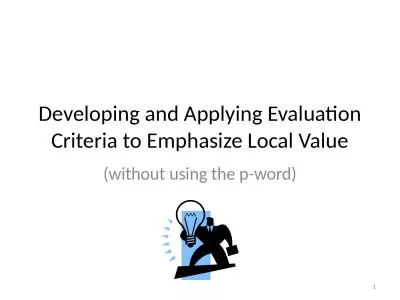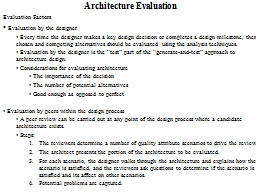PPT-Evaluation Criteria
Author : trish-goza | Published Date : 2016-04-10
S519 What is evaluation What are the steps involved What are step1 and step2 What are absolute or relative merit Review S519 To build a criterion list consider the
Presentation Embed Code
Download Presentation
Download Presentation The PPT/PDF document "Evaluation Criteria" is the property of its rightful owner. Permission is granted to download and print the materials on this website for personal, non-commercial use only, and to display it on your personal computer provided you do not modify the materials and that you retain all copyright notices contained in the materials. By downloading content from our website, you accept the terms of this agreement.
Evaluation Criteria: Transcript
Download Rules Of Document
"Evaluation Criteria"The content belongs to its owner. You may download and print it for personal use, without modification, and keep all copyright notices. By downloading, you agree to these terms.
Related Documents

